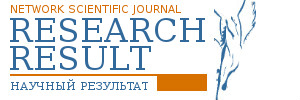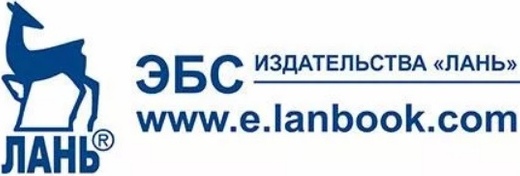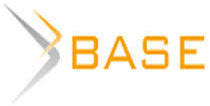MANIFESTATION OF MENTAL QUALITIES IN THE PROCESS OF IM-PROVING THE TRAINING OF STUDENTS AT THE PHYSICAL TRAINING FACULTY (ON THE EXAMPLE OF TABLE TENNIS)
Abstract
One of the features of sport games is the lack of stereotype in their actions: the actions of the athlete are determined by interactions with opponents or members of his/her own team; they are not regulated in advance and vary in accordance with the actions of partners and opponents. The psychological structure of game activity is characterized by a flexible joint of actions and operations which signifi-cantly distinguishes this activity from, for example, speed-strength sports. Playing table tennis is a variant of the antagonistic game activity with direct confrontation, with indirect physical contact. It is a difficult-coordinated activity in varied situations. The uncertainty of the conditions in this game activity is complicated by the rigid time limit and low information content of the actions of the opponent, which determines the complexity of technical and tactical tasks, continuously solved by the athlete during the game time. In this regard we consider it appropriate to analyze and reveal in this article the question of the display of mental qualities in the process of improving the preparation of students professionally involved in table tennis. The article also discusses the manifestations of perceptual-psychomotor reactions in terms of game activity of table tennis-players. The analysis of indicators of athletes’ mental skills is carried out.
Keywords: Table tennis, integrated diagnostics, mental qualities, perceptual quality, psychomotor quality, anticipatory components of the reaction, stability of at-tention
Introduction. Athletes’activities in table tennis are characterized by high mobility, coordination and technical complexity, speed, explosive effort, accuracy, range offensive blows across the breadth and depth of the playing space. By definition of the Chinese experts, the modern style of table tennis is the rate, accuracy, variety and rotation [9].
After analysis of different literature, we can identify the following set of mental qualities of a tennis player:
1. Intellectual quality (RAM, operational thinking, reflective thinking)
2. Perceptual quality (Speed of perception and information processing, the sense of time)
3. Psychomotor quality (Speed simple motor reactions, fast reactions in the differentiation of action, accuracy of anticipatory components of the reaction in the perception of motion of a fast moving object,sensorimotor coordination).
Some of these qualities have become the object of diagnosis in this essay.
The main part. Due to the specifics of the representatives of the sports games, all actions of the athlete are in the form of solutions of continuous perceptual-motor tasks [8].
As you know, training of mental qualities in athletesis is less than training of motor skills [4, 14, 16]. At the same time, the development of a number of such qualities in table tennisplayers is explained by the fact that a large number of repetitions of operations close in their characteristics (the attacking and protective actions) helps the athlete to perfect his/her ability to the solution of tasks at the perceptual and psychomotor level, passing the conscious control of tactical actions [14, 17].
Moreover, as the tactical and mental activity of the sports games representatives in particular are interrelated, it is necessary to include into programming training of table tennis-players system such means and methods, which generally have a tactical focus and allow, along with improving tactical skills, to correct the condition as perceptual-psychomotor and cognitive functioning athletes.
Materials and methods of research. We used a computerized method for diagnosing the level of development of athletes’ mental skills .
This method (or group of methods) refers to the section of diagnostics. Diagnosis may be associated with the assessment as an integral structure of personality and individual psychological functions – the components abilities. K. K. Platonov [11] considered three stages of diagnosis: characteristic psychological features of this activity; comparison with these peculiarities of the psychological structures is quite versatile studied personality: the making of an expert opinion on the basis of comparison with the obligatory account of compensatory abilities. According to V. N. Pushkin [12], the first task is associated with the necessity of studies on general abilities to perform tense activities, and the second – with the development of special methods to predict the quality of the investigated processes.
All works associated with the theoretical evaluation of psychological diagnosis, indicate the need for a comprehensive study of a person. It concerns both the evaluation of the personality structure and assessment of the level of development of certain mental qualities. While using complex methods, it is possible, on the one hand, to identify the relationship between certain mental functions, and, on the other hand, to assess the personality.
The experiment was conducted on the basis of a specialized computer program developed by G.V. Sivitskiy.[15].
The program provides a comprehensive diagnosis of the level of development of mental qualities of the athlete in the perceptual, cognitive and psychomotor sphere, as well as monitoring for a specified period of time of observation of the athlete.
We have studied the following indicators of the level of development of mental qualities of players:
- Psychomotor quality.
The level of development of psychomotor qualities were evaluated by results of speed and accuracy of sensorimotor reactions in terms of visual presentation of discrete and indiscrete (moving) signals.
1.1. A simple mental reaction to the "approach" signal reaction time (sudden increase in the size of thegreen rectangle – PRP). The examinee had to respond to a sudden change of dimensions on a signal (green rectangle) on the screen of the blue color display by pressing the computer keyboard. The time intervals between the two signals were varied from 2 to 5 s and were determined by the computer on the table of random numbers. The subject was given 3 trials and 10 major attempts. The average time (x) and standard deviation (d) were determined. In this series of tests the situation of flying on the athlete’s ball perception was created.
1.2. Choice reaction (CR-1). The examinee responded to the rapid increase of the green rectangle in the center of the field of perception and did not respond to the rapid increase of the rectangle in different directions (left, right, up, down). This was simulated to reduce the distance in relation to the perceived object (for example, the movement of the ball left or right on the target surface of the table or out). Other experimental conditions are the same as in the first series.
1.3. The 2nd variant of choice reaction (CR-2). The examinee responded to theoccurance of the rectangles in the right or left side of the screen display by pressing the appropriate cursor control keys “® or “¬” Other experimental conditions are the same as in the second series.
1.4.1-variant of anticipatory reaction (AR-1).Three pointers appeared on the screen, one of which started the movement with a constant speed of 0.5 s. The examinee had to fix the moment of crossing the cursor to one of the three objects shown in another part of the display screen. At the same time, he had to act pre-emptively, based on the mechanisms of anticipation. A constant error of anticipatory reaction was fixed. The statistical values were calculated according to this constant error.
1.5. 2nd variant of anticipatory reaction (AR-2). The cursor on the screen was moving with constant acceleration in the last third of the way. This variant of anticipation was more complex than the first.
2. Perceptual qualities.
Specialized perception, the so-called "sense of distance", was performed as follows. The examinee was shown two objects (two labels) on the display screen. He had to memorize the distance between these objects (exposure time of 0.3 sec), and during the actual testing, sensing the dynamics of this race, to repeat it, locking the set value by pressing the key. Relations between the two labels were different, in this case there were three types of relationships. Thus, the experiment was conducted in three variants.
2.1.1-variant "sense of distance" (SD-1). One label in the right corner of the display screen was fixed, the other appeared in the left corner and moved to it for 0.3 sec. At the moment when reference distance occurred between the two marks, the examinee pressed a key on the computer keyboard. The same statistical quantities were recorded, as while testing the accuracy of anticipatory reaction. In this series the situations of perception of mutual displacements of the two rivals were simulated.
2.2.2-variant "sense of distance" (SD-2). Both marks were moving towards each other with a constant speed. The examinee again had to fix the moment of occurrence of the reference distance.
2.3.3-variant "sense of distance" (SD-3). Both marks were moving on the display screen from left to right. The speed of the second label was higher, and it at some point of time "cut" the distance from the first to the reference values. The examinee was supposed to fix this moment.
To study the function of attention the technique of "Crossroads"was used. On the electronic scoreboard for a short time (exposure time 3 seconds) appeared a digital table in the form of random numbers from 1 to 9. On the fields of the table to the left and at the bottom, at the same time appeared the same signs "*". The examinee had to assess the situation as quickly as possible and move the cursor of the computer to the cell with a numeric label, which was located at the intersection of the line and column of the table indicated by the marks "*". Such high-speed operation was performed up to 10 completed transactions. The execution time of the test and the number of correct actions were recorded, which allowed to determine the stability of attention.
The research involved 24 athletes – table tennis-players of the 1-st rank and candidates of sports master at the age of 18-22 years – the students of the pedagogical Institute of the Faculty of Physical Education of NIU "BelGU".
The research results and their discussion. The table illustrates the level of development of mental qualities of table tennis-players
Table 1.
Indicators of level of development of mental qualities of the players in table tennis (MS)
№№ | Name of the test | х | |
1 | Simple reaction (SR) | 228,6 | 18,3 |
2 | Choice Reaction (CR-1) | 410,4 | 32,5 |
3 | 2-nd variant of choice reaction (CR-2) | 362,9 | 22,7 |
4 | the 1st variant of anticipatory reaction (AR-1) | 37,3 | 2,9
|
5 | 2-nd variant of anticipatory reaction (AR-2) | 53,4 | 4,3 |
6 | the 1-st variant of the "sense of distance" (SD-1) | 41,5 | 3,3 |
7 | 2-nd variant of the "sense of distance" (SD-2) | 68,9 | 6,0 |
8 | the 3-rd variant of the "sense of distance" (BH-3) | 59,2 | 5,8 |
9 | Attentionsustainability (HC) | 21,4 / 7,2 | 1,8 / 0,6 |
The indicator "attention sustainability " contains two parameters: in the numerator – time of problem’s solution to (C), in the denominator – the number of correctly performed operations.
The figures are recorded in the period of ascertaining experiment.
The psychomotor and perceptual qualities are associated with the mechanisms of perception of the tactical situation and the implementation of tactical decisions in the form of motor actions. In relation to cognitive qualities they are "secondary", since the latter are directly included in the tactical solution and essentially constitute its essence.
We compared the test data with the results obtained with a similar computerized method for other types of sports and martial arts [1, 6]. The comparative analysis shows that the table tennis-players concede to martial arts in terms of speed of simple motor responses, responsiveness, choice, especially in terms of brake differentiation.
First of all, you must consider that the speed simple reaction is mainly determined by the role of psychogenetic factors [11]. As regards to the mechanisms of response selection, there is the following explanation.
The athlete in the process of martial arts faces two types of uncertainty: alternative associated with the number of cash elements of the situation, of which a selection is made, and the time associated with the probability of occurrence of possible elements of the situation in time. All tactical actions aimed at overcoming the uncertainty of the situation by using large time intellectual and motor actions [11]. Consequently, the use of psychological exercises with elements of the overcome alternative or a time of uncertainty, is paired tactical and psychological preparation or essentially complete tactical and psychological preparation [12].
According to other indicators of the level of development of psychomotor and perceptual qualities, the table tennis-players do not concede to single combats. As for the representatives of other sports games, the table tennis-players concede them only in the case when other athletes are much higher level of skill (see, for example, [5, 7]).
Conclusion. Obviously, the most significant feature of a table tennis player is the accuracy of anticipation in the perception of fast-moving object.
A constant structural component of technical-tactical activities, regardless of whether it is forked or flows continuously, with a constantly changing composition of actions, one of which may become dominant, is a tracking function. This is due to the fact that because of the nature of sports activities all other perception before the execution is carried out, both in the form of solutions of continuous perceptual-motor tasks [12] following the movements of the opponent, and simultaneous perception of the image of the opponent.
In a series of tests in table tennis-players, the results showed high enough accuracy anticipatory components of the response signal, moving with acceleration. The acceleration of a moving object (in this case a ball) is typical of the activities of table tennis- players and this requires a high level of development of such specialized mental qualities, such as precision anticipatory components of the reaction in the perception of the object moving with acceleration. It can be argued that in all these cases we are dealing with a special psychomotor skills of tennis.
You must specifically focus on the results of the tests "sense of distance". As mentioned in the second Chapter, the first task in the test was relatively simple, and can be assessed as a kind of reference for analysis of elemental manifestations specialized perception in terms of sports activities. The second task was complicated by the fact that the subject was required to play a greater distance between the perceived objects, and he had little time to perform effector of the instrument. The third task was complicated by the conditions of perception of the situation, because it was the relative movement between the two objects.
As can be seen from the statistical data obtained for the entire sample, the most difficult was the second task, therefore, the time limit for perception and situation assessment is a critical limiting factors perform this test. In this task, a playback error was significant. The relative movement between the perceived objects was not as a pronounced limiting factor, as evidenced by the statistical data of the third job. It can be assumed that in the third task ("SD 3") partly modeled the situation of interaction moving at a table rivals, so the difficulty of the items in this test table tennis-players to a certain extent able to compensate.
Experts attribute the "sense of distance" among the mental function of perceptual content that are improving the training and allow the athlete to perform well in competitions. It is formed on the basis of finely developed muscular-skeletal sensations and perceptions that allow you to monitor various parameters of movement, to estimate the time to navigate in space [6, 9, 12]. Therefore, the "sense of distance" is not only characterized by a specialized perception – high figures are evidence of the existence of certain special athletic abilities [2,18].

















Reference lists